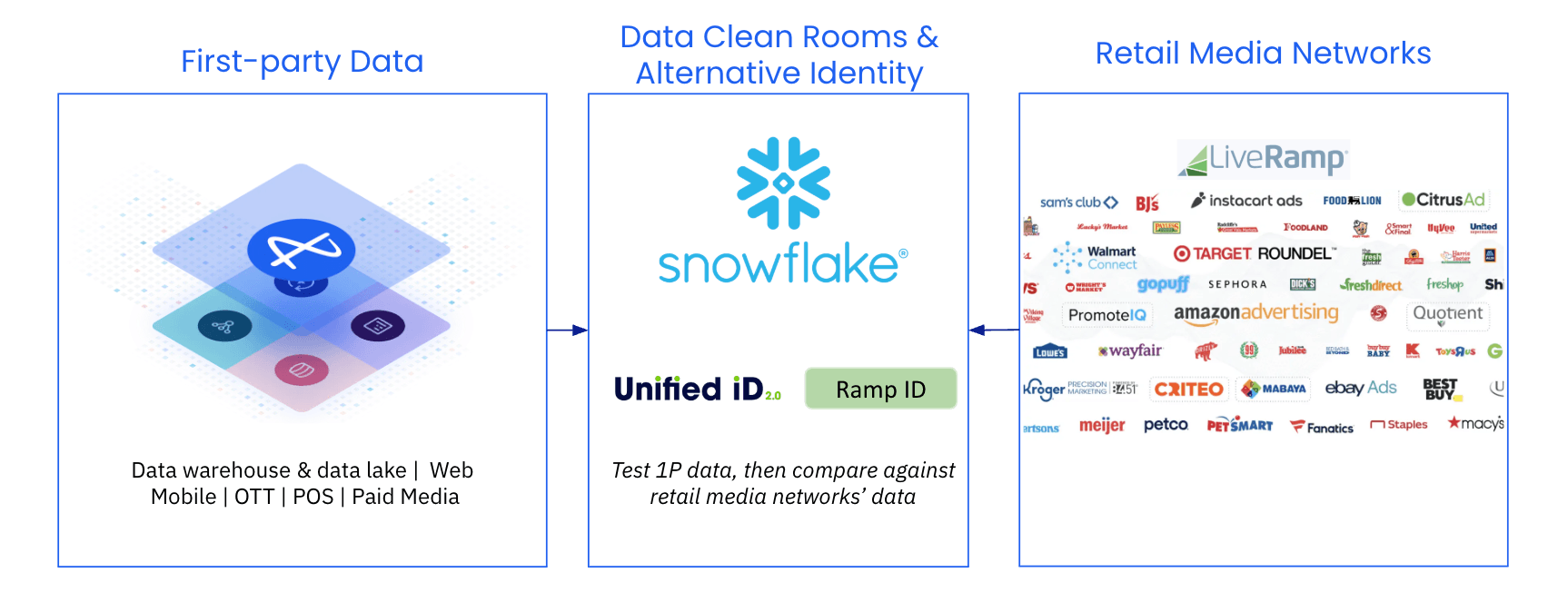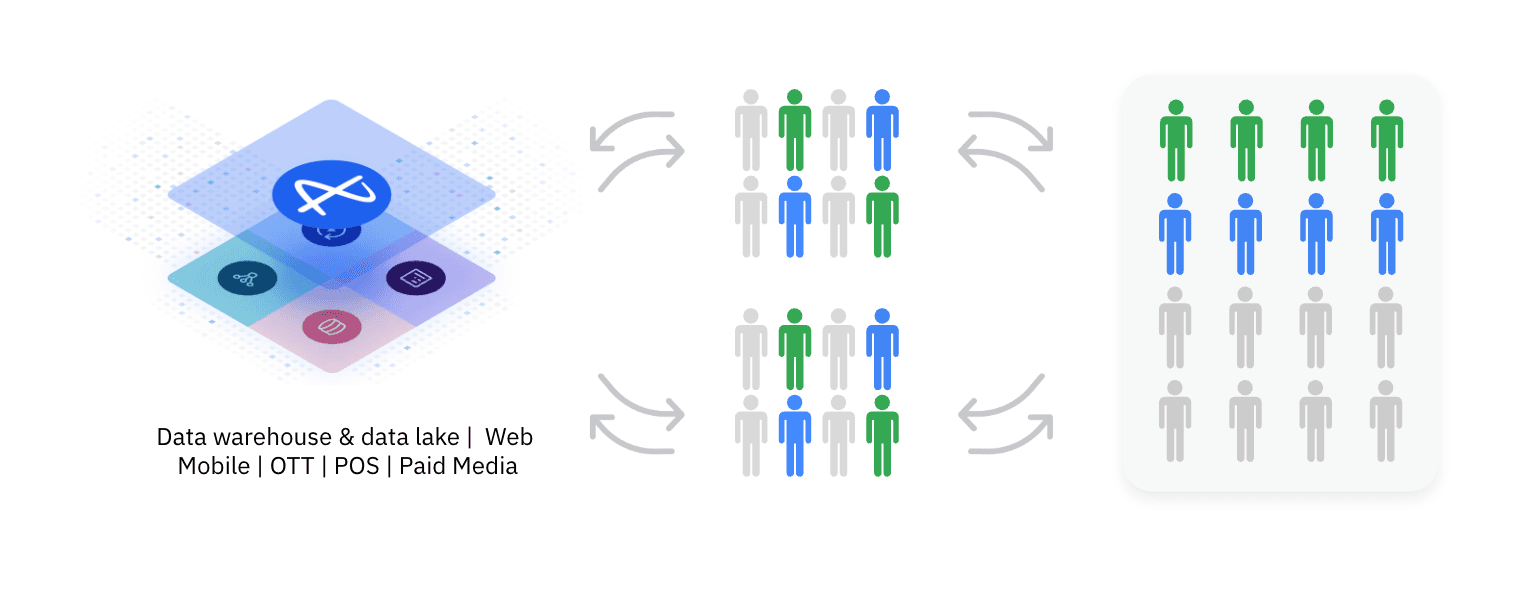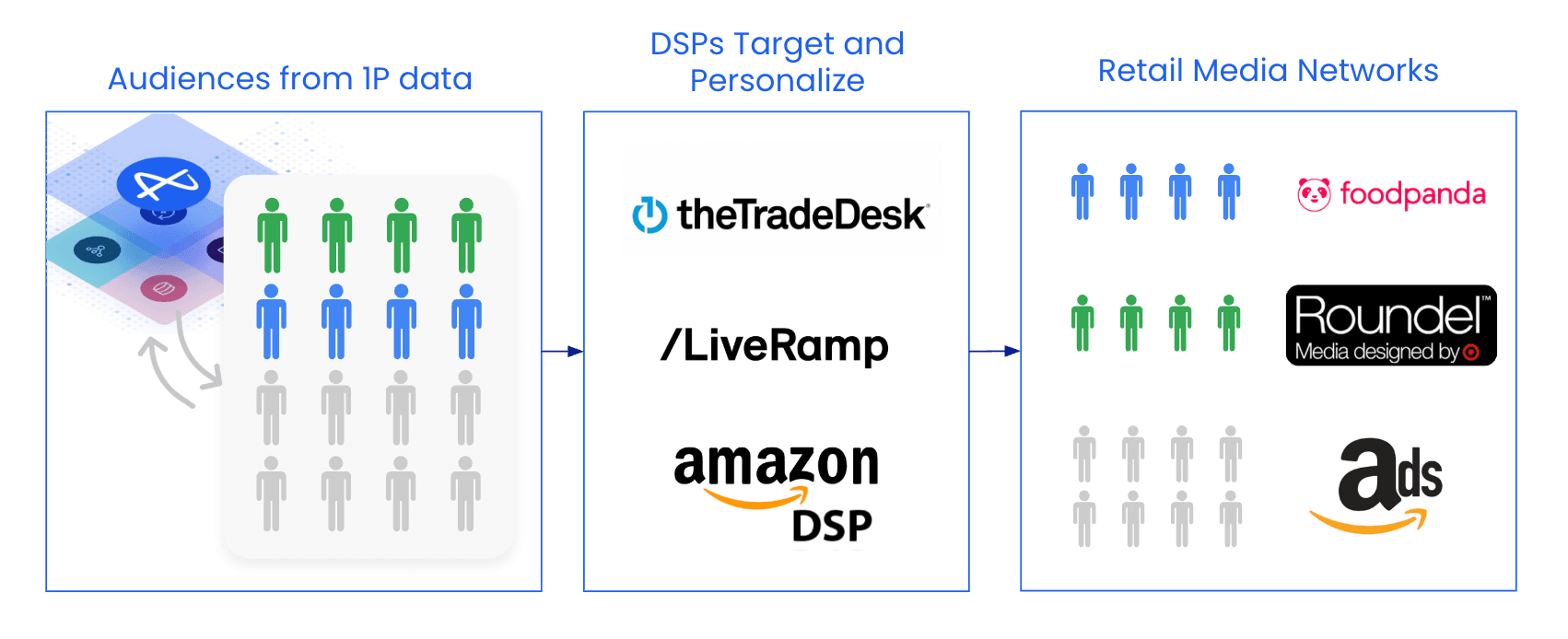Webinar Recap: Retail Media Networks and the Future of Advertising
How to win with retail media and first-party data as third-party cookies crumble
One of the most impactful trends in digital advertising today is the rise of retail media networks. Retailers like Kroger, Nordstrom, and The Home Depot are now providing ad space in their platforms, digital channels, and even some brick-and-mortar experiences, essentially acting as publishers and giving brands unprecedented access to customers as they actively shop.
However, that access is only as good as your targeting data—and as third-party cookies become less and less dependable, the new opportunities of a retail media network require a new first-party data strategy. In my latest webinar, I delved into how retail media networks are reshaping digital marketing—and how you can use them effectively to reach your consumers at the right moment.
Key Topics
- How Unilever used a retail media network for a 1.5x ROAS on Ben & Jerry’s ice cream
- Why today’s “Zero Consumers” drive demand for personalization and immediacy in digital advertising
- Why first-party data is crucial to getting the most out of retail media networks
- How to build an effective retail media strategy, including testing, staging, and optimizing continuously
Retail media networks in action: Ben & Jerry’s
Before we get to cookies, I want to start with another treat: ice cream. Everyone loves ice cream—we all scream for it. But does that make it easy to sell? The thing is, people don’t want to buy ice cream all the time. So if you’re an ice cream company like Unilever’s Ben & Jerry’s, it’s critical to engage your customers at the right moment before their interest melts.
That’s why Unilever partnered with The Trade Desk, a demand-side platform (DSP) with a coalition of retail media networks. They got Unilever’s ice cream ads onto the retail media network for Foodpanda, Asia’s largest online grocery and food delivery service, so when users opened the Foodpanda app in the mood for food, they saw new Ben & Jerry’s flavors prominently featured. The result?
- 1.5x return on ad spend (ROAS)
- 26x higher performance than Foodpanda’s typical audience ROAS
- 94% lower cost per acquisition (CPA)
By meeting their consumers at the right place and the right time through a retail media network, Unilever’s campaign was way more successful than a broad, less-targeted ad approach.
The shift to “Zero Consumers”
Retail media networks have risen in popularity because they provide the precision, personalization, and immediacy that modern consumers demand.
The pandemic and rising digital awareness have dramatically transformed consumer behavior. Today, those behaviors include increased digital retail spending for all generations, brand-switching to combat rising costs, and user-generated content driving purchasing decisions, especially among younger audiences.
This dynamic is what led McKinsey to label today’s shoppers as “Zero Consumers”:
- Zero Boundaries: They expect seamless brand experiences across all devices
- Zero Middle: Consumers either splurge or seek cost-conscious alternatives—rarely choosing middle-priced products
- Zero Loyalty: A single poor experience can drive customers to competitors
- Zero Patience: Brands must engage in real time to maintain relevance
- Net-Zero Impact: Consumers care about corporate values, from sustainability to ethical sourcing
With these shifts, traditional marketing struggles to keep up.
The first-party data imperative
Retail media networks thrive on data, and the data that’ll unlock the most benefit with them and maximize the value of your marketing dollars is first-party data.
Here are a few reasons why:
- Privacy-first marketing: Regulations like GDPR and CCPA mandate consumer consent, making third-party cookies obsolete in many cases
- Single customer view: Unifying consumer data ensures consistent and personalized interactions across the network
- Real-time engagement: Consumers expect context-aware, immediate experiences—which you can only achieve with customer data
Investing in a strong first-party data strategy is the best way to compete effectively, make informed decisions, and build long-term customer loyalty with a retail media network—and in the wider market. First-party data is truly foundational to modern marketing success.
Building a winning retail media strategy
By analyzing how brands succeed with retail media networks, I’ve identified four crucial steps to execute your retail media network strategy effectively:

1. Unify your first-party data
Start by collecting and unifying your first-party data from data warehouses and lakes, websites and mobile apps, and streaming and POS platforms. This also helps with identity resolution and data governance—which is vital to ensuring secure, compliant, and accurate data.
2. Test and refine your data strategy
Before committing to a retail media network, analyze audience match rates through data clean rooms—neutral environments that enable brands and retail media networks to compare anonymized customer data. For example, a brand considering advertising on Amazon or Wayfair can use a data clean room to assess how well its target audience aligns with each platform. You can also run A/B tests to optimize ad effectiveness before full-scale activation.

3. Stage your data for targeting
Using unified identifiers such as Unified ID 2.0 (UID2) and Ramp ID, segment your audience into groups based on retail media network compatibility. This ensures precision in ad targeting.

4. Activate and optimize
To deploy more widely and easily, the final step is integrating your first-party data with DSPs like The Trade Desk, LiveRamp, or Amazon DSP. With a DSP, you can automate purchasing ads across multiple retail media networks. And, of course, you should continually refine your campaigns based on performance metrics to maximize ROAS—a DSP will help with that, too. For example, Unilever’s campaign with Foodpanda used The Trade Desk to seamlessly connect first-party data with retail media, ensuring ads reached the right audience at the right time.

The future of retail media networks
Third-party cookies haven’t completely crumbled, but they’re going to continue to lack the stability and dependability of first-party data and the alternative networks that support it. That combination is a proven channel for engaging the right customers at the right time, empowering businesses to achieve higher conversions, lower acquisition costs, and stronger customer relationships.
But not all networks perform equally—and testing and measurement are crucial to understanding which ones actually move the needle for your business. To do this and maximize your retail media networks’ full impact, keep these three success drivers in mind:
- Don’t rely on third-party cookies (like from Google)
- Measure attribution continuously
- Activate campaigns right away with real-time automation
Succeeding with retail media networks in the evolving retail landscape requires first-party data—and the right tools to leverage it. Real-time pipelines, data clean rooms, and a powerful analytics platform like Amplitude can give you the speed, precision, and ownership to turn your customer data into immediate, measurable action.
Retail media networks are just one way to leverage your first-party data. Read more in our guide to optimizing first-party data.

Ted Sfikas
Field Chief Technology Officer, Amplitude
Ted Sfikas is Amplitude’s Field CTO for the Go To Market team, delivering Digital Strategy, Martech, and Customer Data expertise to clients worldwide.
More from TedRecommended Reading

The Product Benchmarks Every B2B Technology Company Should Know
Dec 11, 2025
5 min read

How Amplitude Taught AI to Think Like an Analyst
Dec 11, 2025
8 min read

Amplitude + OpenAI: Get New Insights in ChatGPT via MCP
Dec 10, 2025
3 min read

Introducing the Next Frontier of Analytics: Automated Insights
Dec 10, 2025
5 min read

